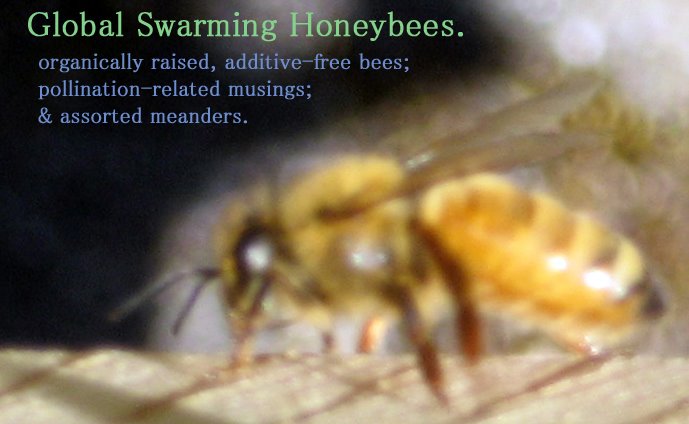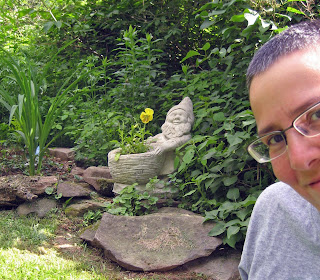Folks, there are only a few days left to do your part to get beekeeping legalized in NYC! On or before 5 p.m. on Wed. Feb. 3rd, please take a moment to send your message in support of modifying the NYC health code to allow beekeeping by emailing your message to: RESOLUTIONCOMMENTS (at) health.nyc.gov
You can learn more here. And, to spark your creative juices (if, indeed, juices can be sparked), here's the letter I emailed to the NYC Health Department just moments ago:
It is my pleasure to submit these comments in strong support of legalizing beekeeping in New York City. As a lifelong resident of this city, I know how important it is to improve the ecological balance here and to support a level of biodiversity that benefits human, plant, and animal alike.
As a weekend beekeeper and gardener in upstate New York, I have come to love the company of honeybees. Their extraordinary role as key pollinators has increased my garden’s yield exponentially. The pleasure of observing them at work is unparalleled. The hum of their labor is a joy to the ear. I seek these aesthetic pleasures in the city too, and rejoice when, come springtime, I am lucky enough to see a honeybee working the blossoms of a crocus in a neighbor’s garden. I only wish such sights and sounds were not so rare.
My neighbors in Brooklyn—many of them old-timers who have been here for many decades—lament the disappearance of honeybees in their gardens—a presence they enjoyed and benefited from. They seem fascinated when they find out I am a beekeeper—they want to know more about the bees; they want to tell their own bee-related stories; they are concerned about the threats bees face.
I mention all this because I think it’s become almost second nature to underestimate the toll on urban residents when, bit by bit, traces of the natural world are eradicated, threatened, or diminished. I think we lose our sense of history and place, and humanizing opportunities to revel and participate in the fascinating world of nature—which is, of course, our world (even in the city).
By legalizing beekeeping, we can increase public education about the importance of bees and the natural world so often overlooked in our busy urban lives. We can more openly educate urban beekeepers on safe, neighbor-friendly beekeeping practices. Our local gardens will certainly benefit. Our connection with self-sufficiency and awareness of where our food comes from will increase. The rich aesthetic pleasures associated with the sights and sounds of bees and their hives will become more available to those who desire them. And we’ll all be able to increase our access to local, New York City honey produced by the sophisticated, urbane bees who call New York City home.
Thank you for considering these perspectives.
Sincerely,
Gerry Gomez Pearlberg
Those, gentle reader, are my two cents—now go ahead and add your two cents to the discussion if you're a New Yorker with an interest in this issue. We really need to make this happen! You can learn more about this effort and the hearing next week by visiting our friends over at Just Food, who are working so hard on this venture.


